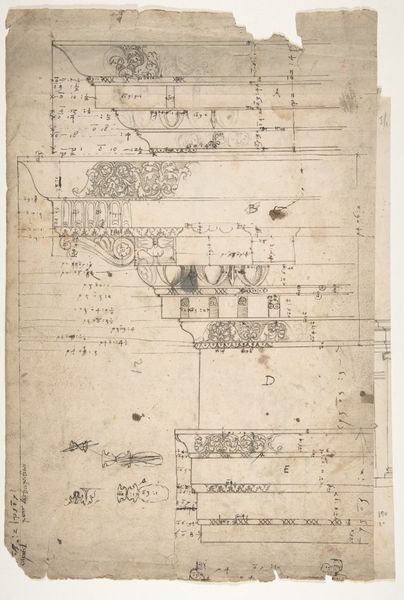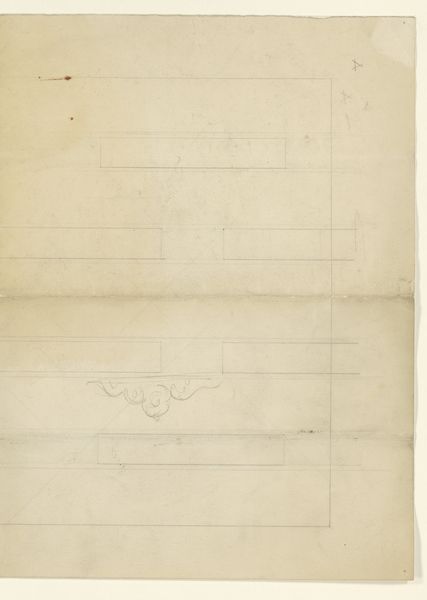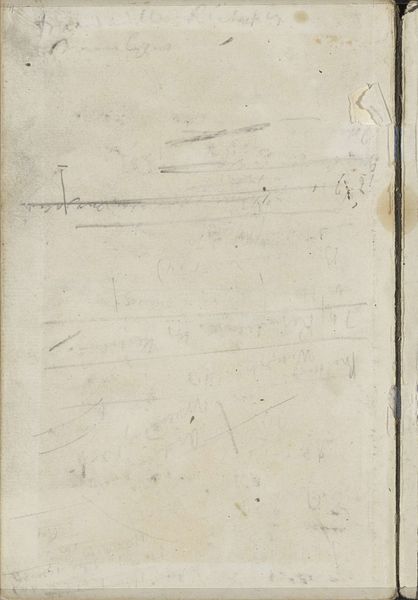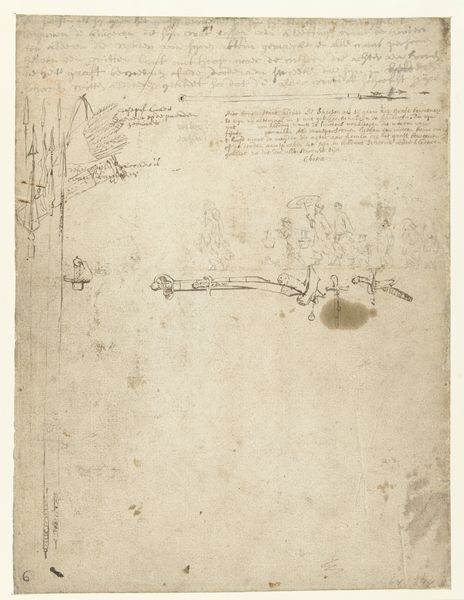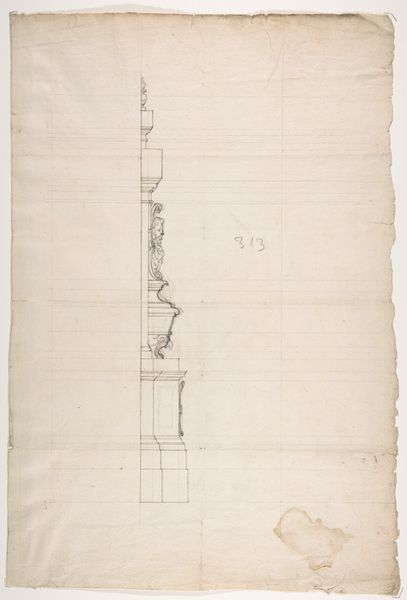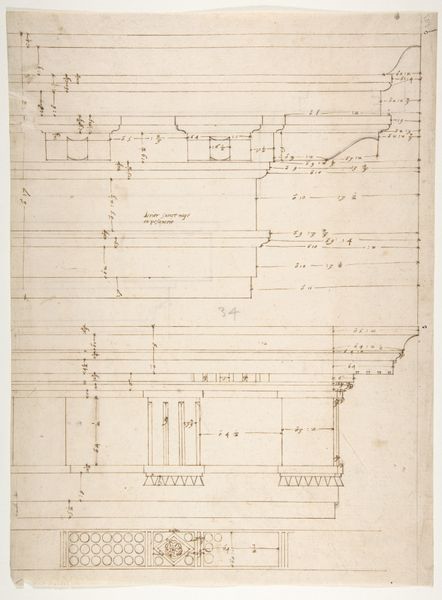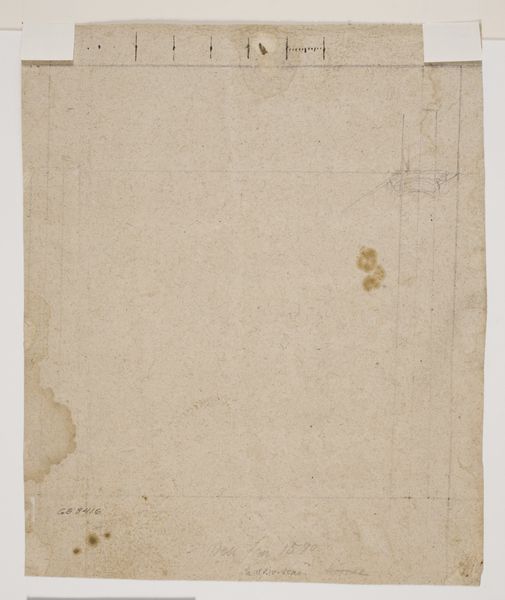
Design for a Stage Set at the Opéra, Paris 1830 - 1890
0:00
0:00
Dimensions: sheet: 18 1/8 x 10 13/16 in. (46 x 27.5 cm)
Copyright: Public Domain
Editor: So, this is Eugène Cicéri's "Design for a Stage Set at the Opéra, Paris," likely from between 1830 and 1890. It's a pencil and possibly some other print medium on paper. The thing that really grabs me is the geometric grid overlying what looks like a cityscape. How do you interpret this piece? Curator: As a materialist, I'm immediately drawn to the labor involved in creating this design. Consider the physical act of meticulously drawing that grid, the repetitive motion, and the paper itself – where was it made? Who made it? These materials aren't neutral; they carry histories of production and consumption. This goes beyond just aesthetics. Editor: That's a different way to look at it than I would have expected. Curator: Right, but look closer. What does this seemingly simple "drawing" reveal about the industrial processes that allowed for the Opéra's construction? Where were the paints, canvas and construction supplies manufactured? Consider what kind of resources and workforce this stage design and the Opera’s construction, might require. Editor: So, you're saying it's not just about the beautiful, Romantic-era design but about the material reality that made it possible? The workers, the mines, the factories... Curator: Exactly. And this challenges our assumptions about art being solely a product of individual genius. It forces us to think about the collective labor and resources that underpin even seemingly high-minded cultural creations like opera. Does it still retain its intended function as an objet d'art? Editor: I see what you mean. It kind of pulls back the curtain, not just on the stage but on the entire system behind it. Now I’m curious about what kind of pencil he used and where it came from! Curator: Precisely. It makes us reassess traditional distinctions between high art and craft. Hopefully you have seen the stage, and what goes on backstage, differently. Editor: This really opens my eyes. I was so focused on the visual representation but overlooked the entire material context. Thanks for the insight!
Comments
No comments
Be the first to comment and join the conversation on the ultimate creative platform.
